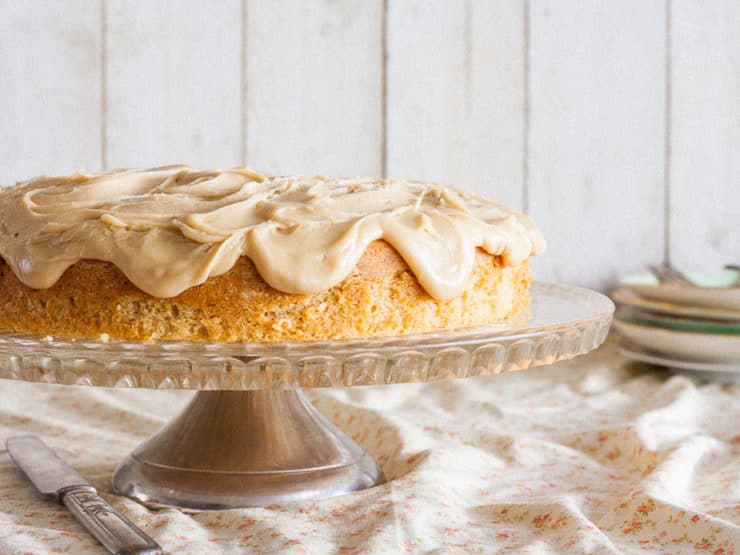
What plant we in this apple-tree?
Fruits that shall swell in sunny June,
And redden in the August noon,
And drop, when gentle airs come by,
That fan the blue September sky,
While children come, with cries of glee,
And seek them where the fragrant grass
Betrays their bed to those who pass,
At the foot of the apple-tree.
– From The Planting of the Apple-Tree by William Cullen Bryant (c. 1864)
In the late 18th century, Americans began to substitute inexpensive locally-made hard cider in place of costly imported European brandy and wine for the liquid in their newfangled chemically-leavened butter cakes. Cider cakes were among the first truly American cakes.
Until the mid-19th century and the rise of the temperance movement, the English word cider, from the Hebrew shekar (intoxicating beverage), always meant fermented apple juice (hard cider). In Britain, it still does. The non-alcoholic version was called apple juice. (Apple cider is actually redundant.) As alcoholic cider became less acceptable among segments of the American population, the word cider shifted to connote unfiltered fresh apple juice (also known as sweet cider and soft cider), while the fermented type became hard cider.
Genuine sweet cider was primarily available from late September through January; the best pressed from aromatic russets using a blending of tart and sweet apples. Today, many brands of sweet cider are pasteurized and some also contain preservatives, notably sodium benzoate and potassium sorbate. A product labeled “apple juice” has been pasteurized and filtered, both of which affect the flavor. Applejack, called calvados in Europe, is distilled apple brandy from sweet cider.
Fresh apple juice has a short shelf life – a few days when stored at room temperature; two to three weeks when refrigerated. Unpasteurized apple juice, like grape juice, naturally ferments from wild yeasts and bacteria. To control quality, most brewers add cultivated yeast from ale or wine. The fermentation process takes about two weeks usually followed by an additional seven days to allow the sediment to settle in the barrels. The new cider is then aged for at least two weeks and frequently for several months, which improves the flavor. Depending on the type of apples used and the fermentation process, hard ciders can vary greatly in taste (dry or fruity with complex balances of sweet, bitter, and tart); clear or cloudy; still or sparkling; and alcohol content (4% to 8%; adding sugar increases the alcohol content). Cider is much easier to make than beer or corn liquor.
Cider in the U.S. was another vestige of the English legacy. Among the things brought by the Normans to England after their conquest in 1066 was a knowledge of cider making and apple varieties that yielded superior cider. Apple trees thrived in the southern part of the isle, and cider flowed from the numerous English orchards, most expressly cultivated to make cider. The Pilgrims and many other English colonists brought apple seedlings and a love for cider with them to the New World and by about 1630 were already harvesting apples. The import of the European honeybee to America in the 1600s helped with pollination. Before long, Reverend William Blaxton planted an orchard on what is now Boston’s Beacon Hill. After Blaxton moved to Rhode Island in 1635, he developed the Rhode Island greening, the first native American variety. Apples were soon growing in all thirteen colonies and nearly every farm had at least a few apple trees if not a considerable orchard.
In the 18th century, corresponding to a canker that ravaged the orchards of Britain along with gross mismanagement, the English upper class switched to imported wines as their alcoholic beverage of choice and subsequently viewed hard cider as peasant fare. On the contrary, cider remained prevalent and preferred among everyone in colonial America. It was drunk throughout the day (at breakfast, lunch, and dinner) by all ages and classes, not only because of its taste and kick, but because it was safer than frequently tainted natural water sources. In the late 1700s, the average New Englander consumed 35 gallons of cider per year. George Washington used apples grown at Mount Vernon to make cider, but also ordered huge quantities to satisfy the needs of his household – purchasing 477 gallons in 1774.
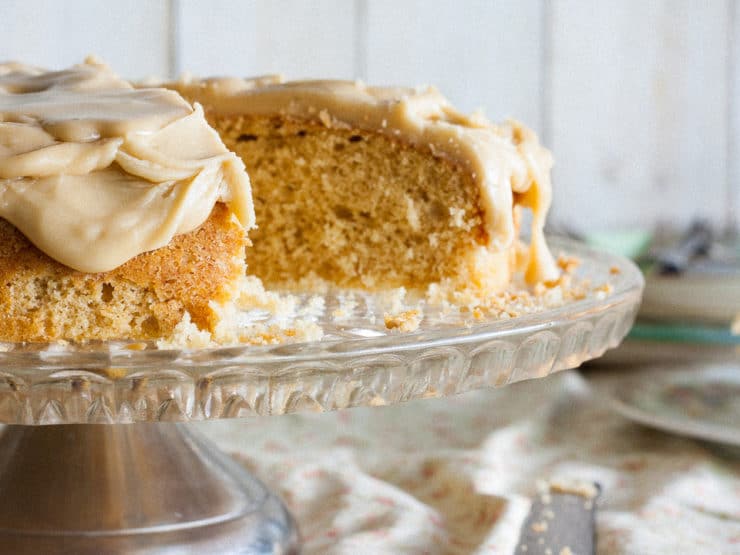
In 1801, at the age of 26, an eccentric preacher named John Chapman, better known as Johnny Appleseed, left his home in Leominister, Massachusetts, barefoot, but probably not wearing a cooking pot for a hat, and headed west preaching, planting apple trees, and establishing tree nurseries (and selling seedlings to pioneers) in Ohio and Indiana. He died forty-four years later in Fort Wayne, Indiana, after covering around ten thousand square miles and promulgating apples throughout much of that territory. (Chapman was born on September 26, 1774, that date becoming Johnny Appleseed Day.) Cider helped open the frontier.
Naturally, cider became part of American culture. Following the Panic of 1837, the first major American financial slump, the presidential campaign of William Henry Harrison in 1840 used the symbols of “the log cabin and cider barrel” instead of discussing the issues (imagine that – slogans and images instead of substance), both items intended to make him appear a man of the people and political outsider and of humble origins. The wealthy Harrison was actually a scion of Virginia aristocracy and longtime politician.
Cider also became part of American cookery. The December 28, 1827 issue of the New England Farmer (Boston) contained an early record of the innovation of using cider in a batter: “To make good Cider Cake—-Two pounds of flour, one of sugar, half of butter, one of fruit [raisins and currants], one pint of [hard] cider, two teaspoons of pearlash, cloves and spice to your taste.” Note the absence of any eggs and the presence of chemical leavening, which was typical of the earliest cider cake recipes. Most of the older cider cake recipes also called for a generous amount of raisins or other dried fruit as well as a profuse amount of spices, transforming it into a sort of fruitcake. The “Cider Cake” in Mackenzie’s Five Thousand Receipts by Colin Mackenzie (Philadelphia, 1829) directed “with or without fruit.” On the other hand, The American Frugal Housewife by Lydia Maria Child (Boston, 1829) – the author perhaps best remembered for her 1844 poem “Over the River and Through the Woods” – included a “Cider Cake” without any fruit and directing “spice to your taste”: “Cider Cake is very good, to be baked in small loaves. One pound and a half of flour, half a pound of sugar, quarter of a pound of butter, half a pint of cider, one teaspoonful of pearlash; spice to your taste. Bake till it turns easily in the pans. I should think about half an hour.” By the time of The American Housewife by An Experienced Lady (New York, 1841), some less frugal cooks were incorporating eggs into their versions for a lighter texture: “Cider Cake. Stir together a tea-cup of butter, three of sugar – beat four eggs, and put into the cake, together with two tea-cups of flour, and a grated nutmeg. Dissolve a tea-spoonful of saleratus in half a tea-cup of milk, strain it, and mix it with the above ingredients – stir in a tea-cup of cider, and flour more cups of flour.” The English cider cakes of the late 19th century, which accompanied the revival of cider making in England, were influenced by American cakes; the English traditionally serve cider cake (typically made with less sugar than American versions) with custard or lemon sauce.
Effervescent hard cider and cakes made from it remained a familiar sight on American tables through the end of the 19th century. Meanwhile, prohibitionists, rising in influence, focused their antagonism on hard cider, which they deemed to be the gateway to other alcohols. In the words (imagine the media exaggerating and distorting) of newspaperman and temperance-advocate Horace Greeley in Recollections of a Busy Life (New York, 1868): “Cider was, next to water, the most abundant and the cheapest fluid to be had in New Hampshire, while I lived there, -— often selling for a dollar per barrel. In many a family of six or eight persons, a barrel tapped on Saturday barely lasted a full week. Whoever dropped in of an evening expected to be treated to cider; a mug, once emptied, was quickly refilled; and so on, till every one was about as full as he could hold. The transition from cider to warmer and more potent stimulants was easy and natural; so that whole families died drunkards and vagabond paupers from the impetus first given by cider-swilling in their rural homes.”
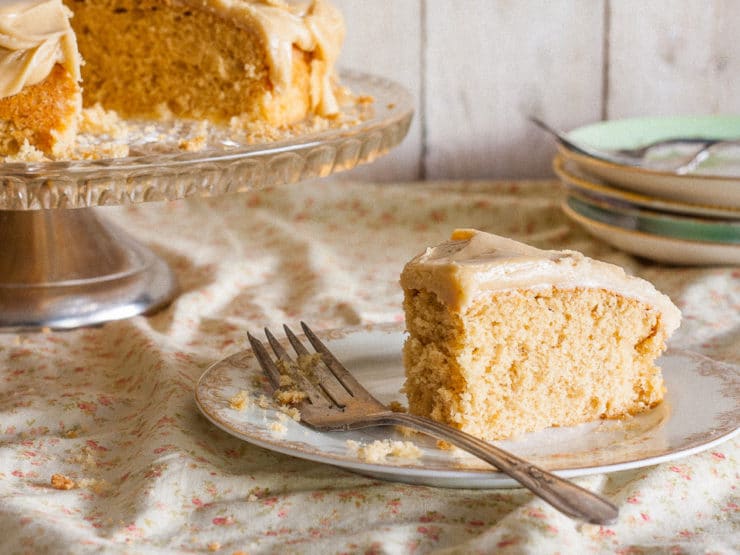
Armed with axes, temperance women chopped down orchards to eliminate the source of cider. The temperance movement occurred at the time of the Industrial Revolution in America, when industrialists needed their workers sober to run the machinery — coffee or tea meant a more clear-headed workforce –- and abetted the prohibitionists struggle against cider. As more and more of the American population moved to cities where cider was not as readily available and German immigrants supported new local breweries, beer replaced hard cider as America’s predominant alcoholic beverage.
With Prohibition in 1919, hard cider disappeared from most parts of the country as did cakes made from it. Cider cake, however, endured as a favorite among Shakers and in a few northeastern locales that persisted in enjoying hard cider. For most of the rest of the country, various cakes made from fresh apples or applesauce assumed the role once held by those made with cider.
The following recipe is a variation of a basic two-egg butter cake, which was common in areas where eggs were less readily available. It has a moist, close texture. Cider imparts a piquancy and subtle fruity essence that blends intriguingly with spices. Cider’s flavor and, therefore, that of this cake varies according to the types of apples used in the cider and the way they were processed. If the cider lacks tartness, you can add a little lemon juice. Cider cake is delicious plain, although a lemon-accented frosting, cream cheese frosting, or whipped cream frosting complements a tart cider.
APPEALING APPLES
The apple, no relation to American crabapples, is a member of the rose family. It originated as small exceedingly acidic pomes in Asia, probably in eastern Kazakhstan, where wild apple trees still grow. Some theorize that rudimentary apples were initially spread by bears and wild horses who progressively favored larger, sweet fruits. There is disagreement as to which point it reached the Mediterranean and Europe and that many of the ancient references to ‘apples’ were actually to the quince.
In America, apples were capable of lasting fresh in a cool place, like a cellar or pit, from fall until well into spring. It was also the only widespread fruit in the Eastern Seaboard capable of drying — typically using tart, early-maturing species air-dried outside or in special dry houses, then hung in pantries. In the 19th century, dried apples become a major American export and part of the average American diet. Some varieties were raised specifically for their ability to store fresh (Hall, Mattamuskeet, Winesap, and Yates) or dry white (such as Maiden’s Blush). In general, different varieties thrived in the North and South. In many American families, apples in some form appeared on the table at least daily, including cider, cider vinegar, apple butter, applesauce, or in some dessert.
By the onset of the 20th century, about a thousand apple varieties were being sold in America. Today, there are more than 7,000 horticultural forms. Following World War II, most American apple production shifted westward, primarily to Washington State and Oregon where warm days and cool nights produce brighter red apples. At the same time, apple growing changed from small to large growers, who concentrated on a few varieties based on factors such as appearance, long stems (easier to use pesticides), resistance to disease, and storage and shipping ability rather than flavor. As a result, many of the older, better-tasting varieties disappeared from stores. Of the approximately one hundred apple varieties grown commercially in the United States today, the primary four are Red Delicious (originally Hawkeye), Golden Delicious, Granny Smith, and McIntosh. Recently, Fuji, Braeburn, Gala, and Pink Lady also gained a place on store shelves. About half of the American apple harvest is consumed fresh.
Apples have four basic culinary characteristics: Sweetness, tartness (derived from malic acid), fruitiness, and texture. These characteristics vary greatly among different varieties, ranging from very tart to very sweet; firm to mealy; dry to juicy; the ability to maintain shape or disintegrate during baking; and some keep well, while others, like Jonathans and Gravensteins, last only for a few weeks. The balance between tartness and sweetness (called brix/acid by growers) is central in determining an apple’s desirability. These characteristics make some varieties better for eating raw, others for cooking. The best eating apples have a well-balanced ratio of sweetness and acidity, producing a complexity, and a crisp, juicy texture. Slightly tart apples that hold their shape during baking are best for pies and cobblers. Apples with higher levels of calcium and pectin (which help maintain the cell structure during baking) are best for baking and pastries (the reverse is true for fruit used to make applesauce), including Golden Delicious, Granny Smith, Jonathan, Newton Pippin, Northern Spy, Rome Beauty, Stayman, Winesap, and York Imperial.
Recommended Products:
We are a participant in the Amazon Services LLC Associates Program, an affiliate advertising program designed to provide a means for us to earn fees by linking to Amazon.com and affiliated sites. As an Amazon Associate I earn from qualifying purchases.
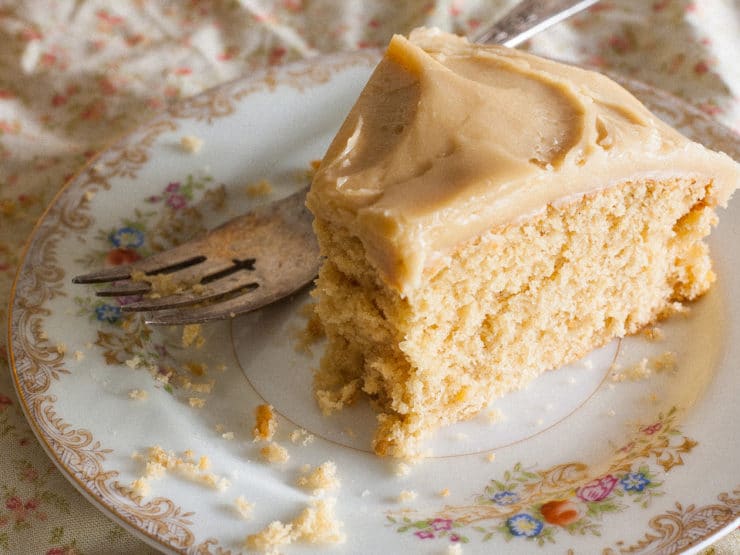
Food Photography and Styling by Louise Mellor
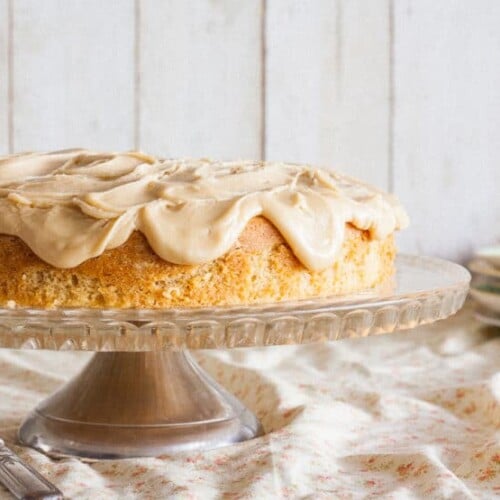
Cider Cake with Caramel Frosting
Ingredients
Cake
- 2 cups sifted cake flour, or 1 2/3 cups all-purpose flour, sifted (7 ounces/200 grams)
- 2 teaspoons double-acting baking powder
- 1 teaspoon ground nutmeg or cinnamon, or ½ teaspoon each
- 1/2 teaspoon salt
- 1/2 cup unsalted butter or vegetable shortening, softened (65 to 67°F) (1 stick/4 ounces/115 grams)
- 1 cup granulated sugar or packed light brown sugar, or ½ cup each (7 ounces/200 grams)
- 2 large eggs (6 tablespoons/3.5 ounces/100 grams)
- 1 teaspoon vanilla extract or 2 teaspoons lemon juice
- 2/3 cup hard cider or unpasteurized sweet cider (5.5 ounces/160 grams)
- 1/2 cup raisins, chopped dates, or dried cranberries (optional)
- Confectioners' sugar for dusting, or Caramel Frosting (recipe follows), Lemon Buttercream, or Cream Cheese Frosting
Caramel Frosting
- 1/2 cup unsalted butter (1 stick/4 ounces/115 grams)
- 1 cup packed light brown sugar (7.5 ounces/210 grams)
- 5 tablespoons milk or buttermilk
- 2 cups confectioners’ sugar, sifted (8 ounces/225 grams)
- 1 teaspoon vanilla extract
NOTES
Instructions
- To Make Cake: Position a rack in the center of the oven. Preheat the oven to 350°F (325°F for a convection oven). Grease one 9-inch springform pan, 11- by 7-inch baking pan, 9-inch square pan, or 9- by 5-inch loaf pan or two 8- by 1½-inch round baking pans, line the bottom with parchment paper or wax paper, grease again, and dust with flour.Sift together the flour, baking powder, nutmeg, and salt.

- In a large bowl, beat the butter on low speed until smooth, about 2 minutes. Increase the speed to medium, gradually add the sugar, and beat until light and fluffy, about 4 minutes.

- Beat in the eggs, one at a time, beating well after each addition.

- Stir in the vanilla.

- Add the flour mixture alternately with the cider (4 portions for the flour; 3 portions for the cider) beginning and ending with the flour. If using, add the fruit.

- Pour into the prepared pan. Bake until a tester inserted in the center comes out clean and the cake springs back when lightly touched, 30 to 40 minutes for the springform pan; 30 to 35 minutes for the 11- by 7-inch pan; 35 to 45 minutes for 9-inch square pan; about 1 hour for a loaf pan; or 25 to 30 minutes for the 8-inch pans. Let cool in the pan for 10 minutes, then remove the cake to a wire rack and let cool completely, at least 1½ hours. Wrap in plastic wrap and store at room temperature for up to 3 days or the freezer for up to 2 months. Sprinkle with the confectioners' sugar or spread with the frosting.

To Make Frosting
- In a medium saucepan, melt the butter.

- Add the brown sugar and stir until melted.

- Add the milk, bring to a boil, and let boil for 1 minute. Remove from the heat and gradually beat in the confectioners’ sugar and vanilla, adding a little more milk if necessary, until smooth and fluffy. Use immediately.

Nutrition

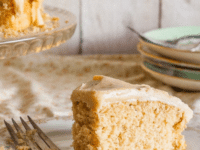
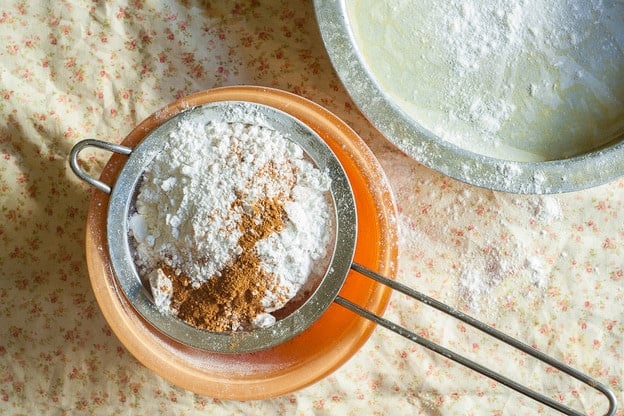
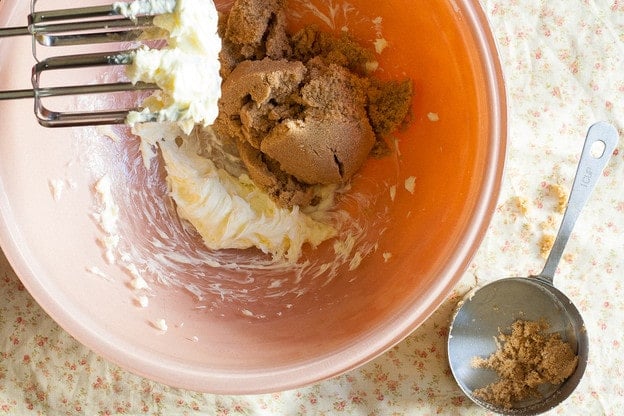
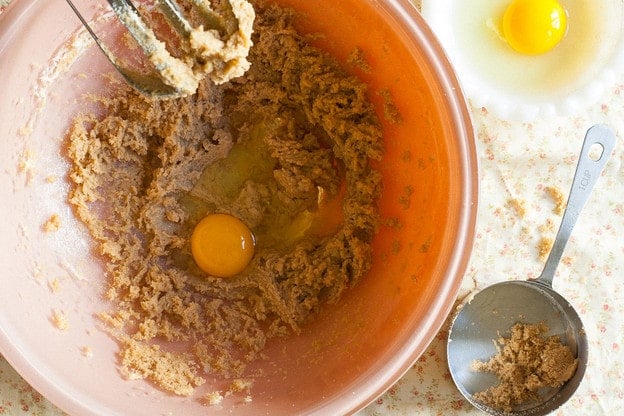
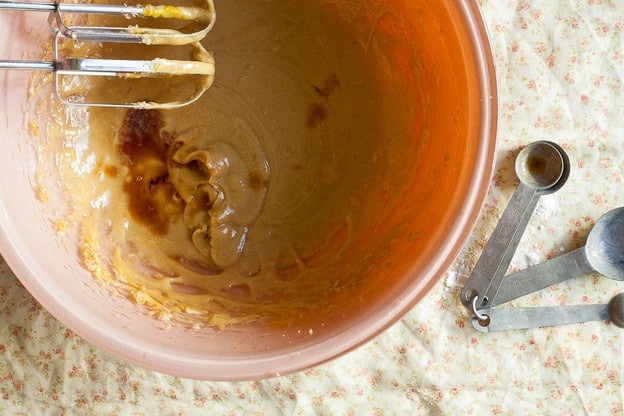
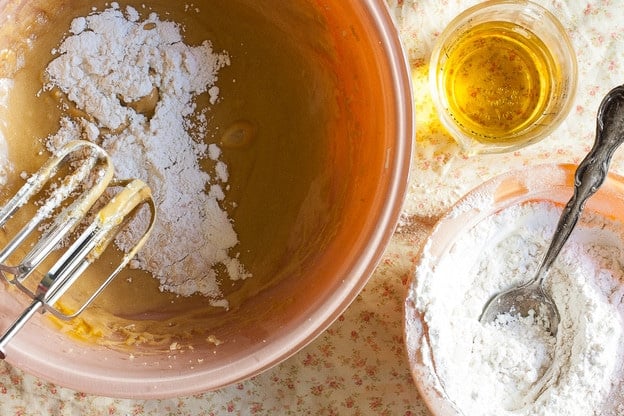
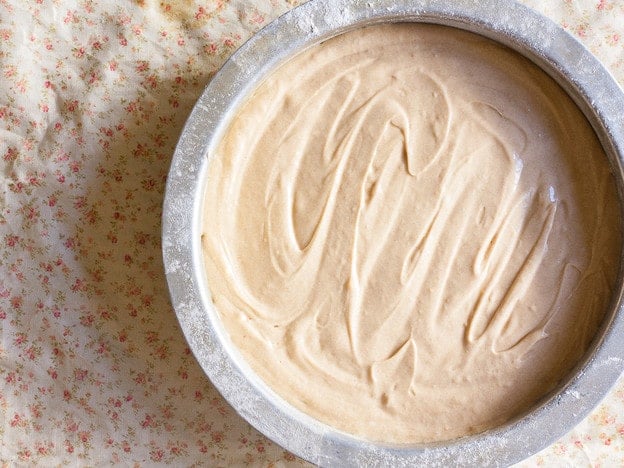
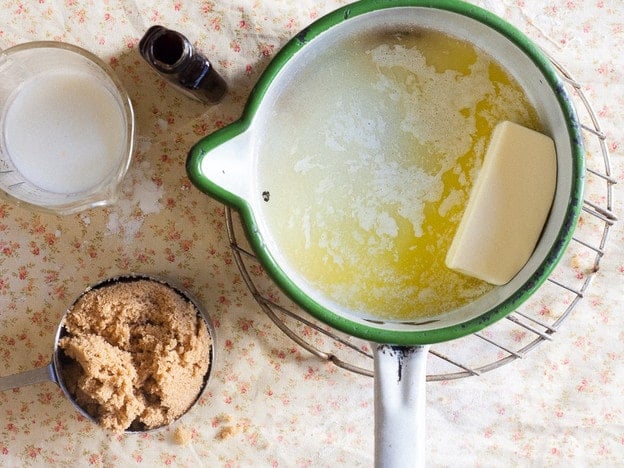
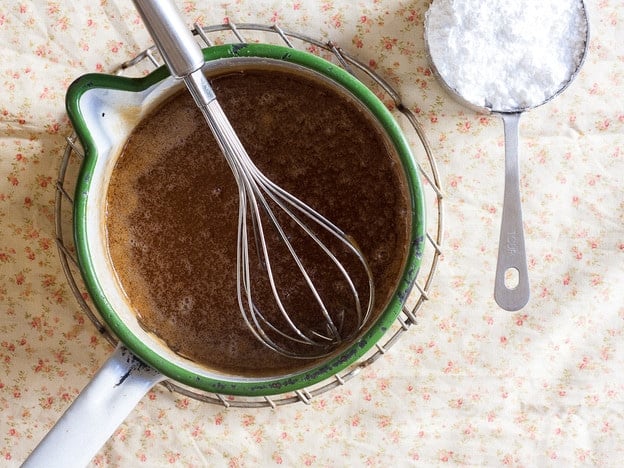
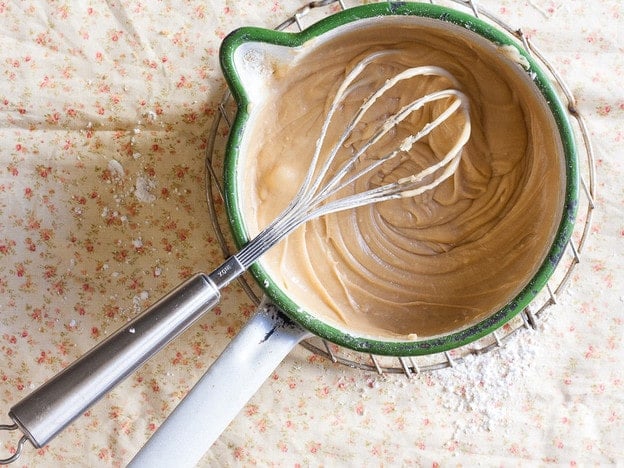


This sounds amazing, but why can’t I use pasteurized sweet cider?
My cup of tea!
I might make it with apple juice and some brandy though.
Will let you know what happened..
Thank you!
Hanni
This was a total failure, for me. Cake didn’t rise and came out dry and dense. Frosting was like eating pure sugar (which it almost is, with both brown and confectioners sugar).
Hi Lisa, so sorry to hear you had a bad experience with this recipe. Louise, who baked and photographed Gil’s recipe for The History Kitchen, said it turned out fantastic for her. I wonder what went wrong for you? Wish I could have been there to help you troubleshoot!
Hi Lisa, checking back because I spoke with Gil about your issue. He says you likely forgot to add the baking powder to the cake, which is the rising agent here. As far as the frosting goes, most frosting recipes are “pure sugar.” That’s basically what frosting is. Gil has kindly offered to help you troubleshoot if you would like to speak with him about it, as he stands by all his recipes. Let me know if you’d like me to have him contact you.
My favorite so far!
SOUNDS DELISH!!
This history was facinating to read!! Enjoyed it so much! Thanks for sharing. I want to try this!
Mouth is watering!!
great column…I am thinking of making it for Simchat Torah.
Looks wonderful!
I´m gaining weight following your page Tori! Great fall flavors!
I love the looks of this, but have you seen the price of cider?
Diliciussssss
Oh no, please stop posting yummy stuff lol no, don´t
Nice….
Do want.
Dangerously Divine Darling!
that looks amazing …
Yum!!
Sounds wonderful!
Good Lord, there goes the diet! Looks amazing!